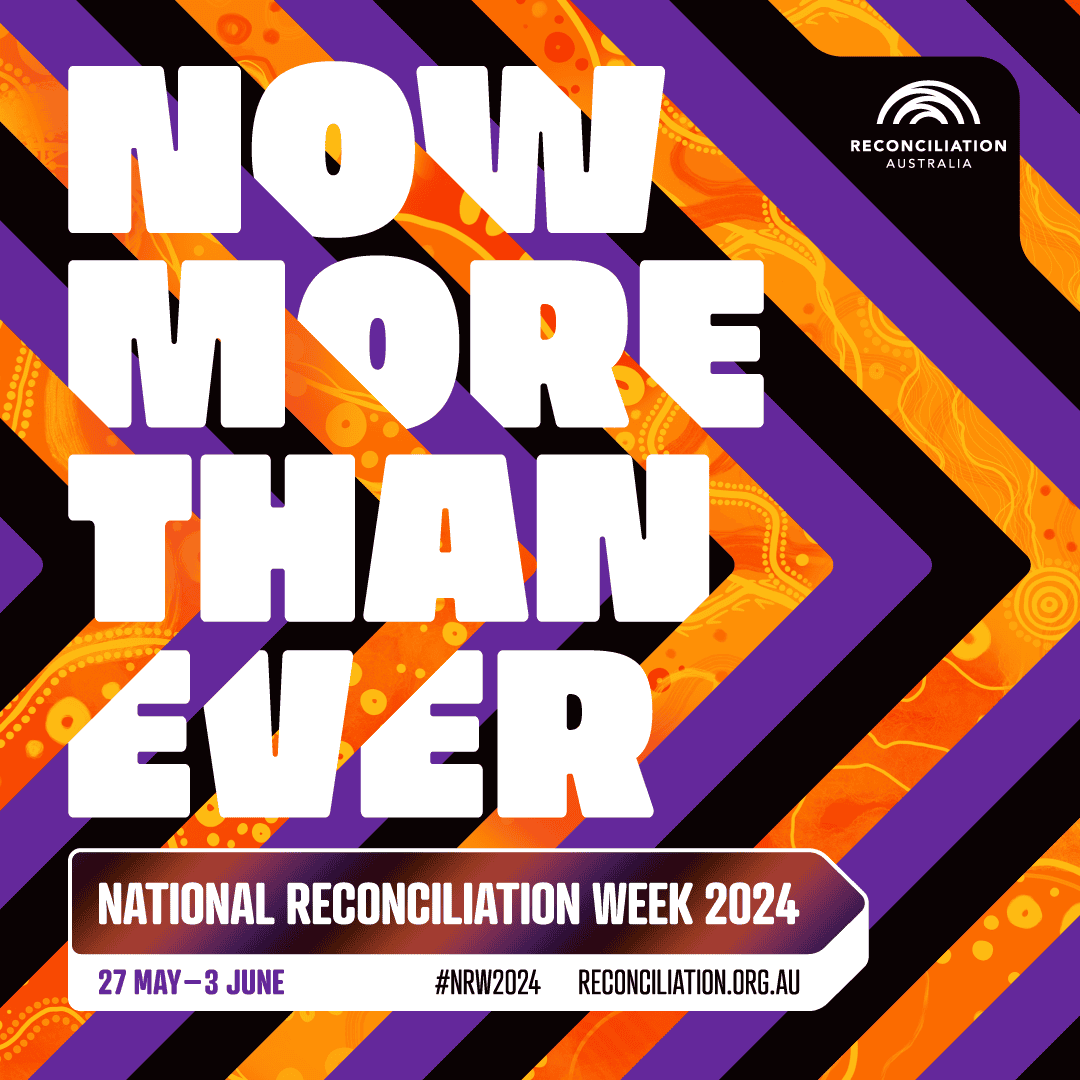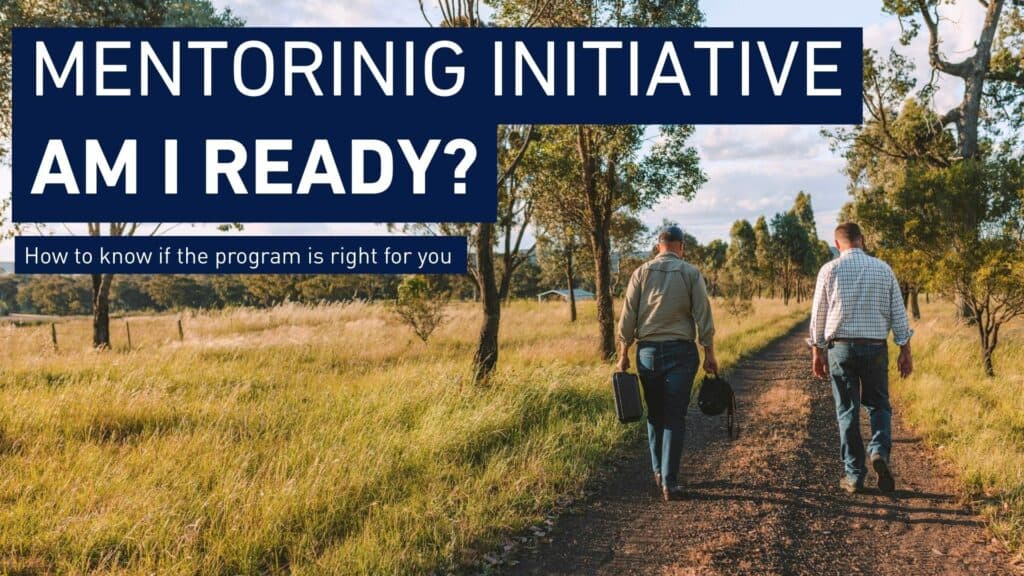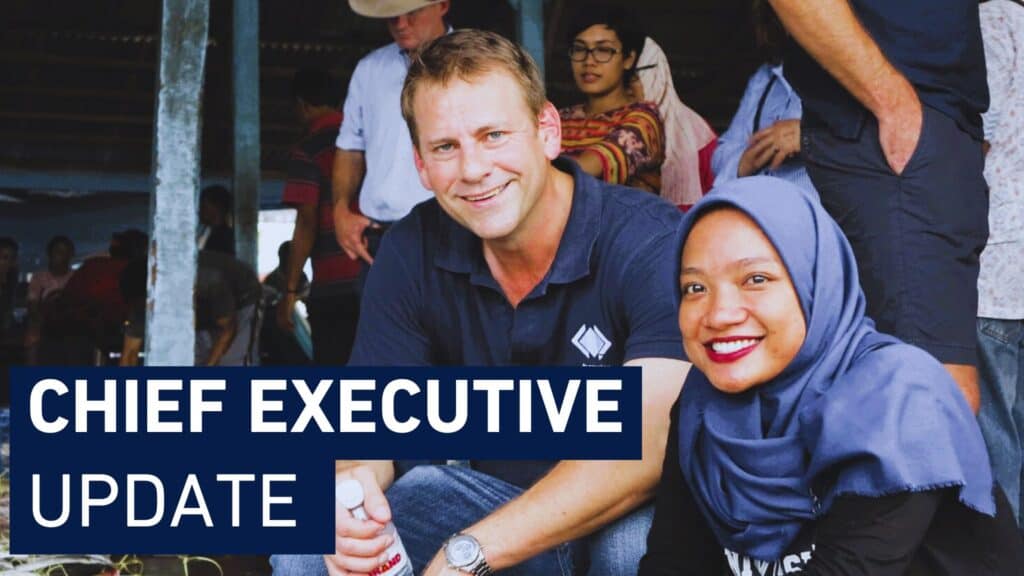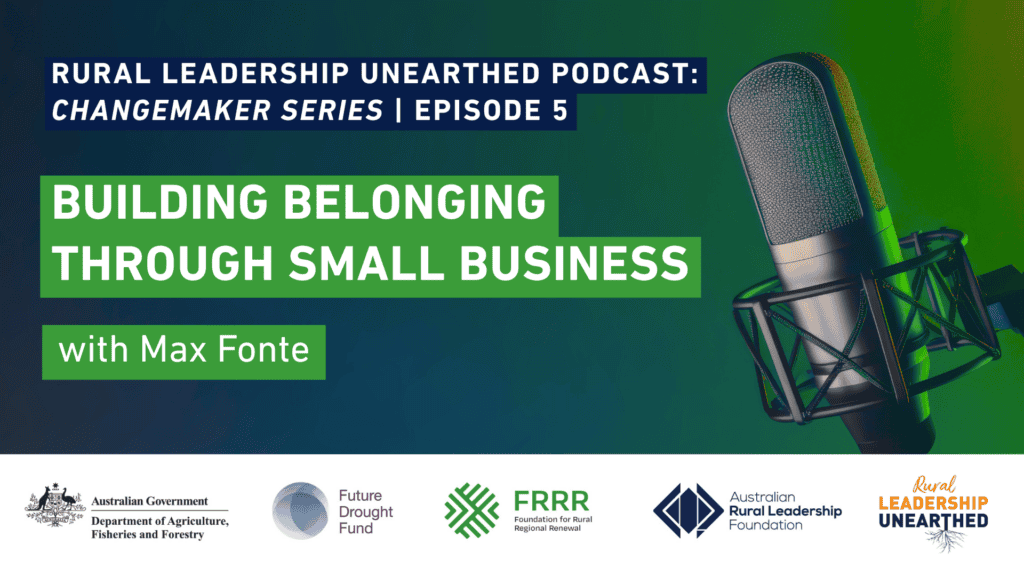At the Australian Rural Leadership Foundation, we believe National Reconciliation Week (NRW) is a time for all Australians to learn about our shared histories, cultures, and achievements, and to explore how each of us can contribute to achieving reconciliation in Australia.
Over the last few years the ARLF has been on a journey to finalise our Reconciliation Action Plan (RAP), helping us to deliver tangible and substantive benefits for First Nations peoples and increase cultural safety in our workplaces. As part of this process we are committed to celebrating and raising awareness of reconciliation and National Reconciliation Week, to reflect and start conversations within our networks.
We all have a role to play when it comes to reconciliation, and in playing our part we collectively build relationships and communities that value First Nations peoples, histories, cultures, and futures.
National Reconciliation Week at the ARLF
To mark National Reconciliation Week, we asked staff and alumni to share some reflections with us. Here is what they had to say…
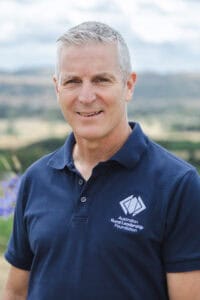
Matt Linnegar
CEO of the Australian Rural Leadership Foundation & ARLP C7 alum
1. What does reconciliation mean to you?
At its heart, I think it is about steps that we all need to take to bring people together – First Nations and non-First Nations people. Importantly the aim of this ‘coming together’ is for the benefit of all Australians – reconciling the past and finding new ways to move forward.
2. What steps do you believe are crucial for reconciliation to continue a national scale?
There are many and to do them justice reconciliation cannot be just a week in time each year. While we have come a long way as a nation, there’s still much to do. Full acceptance of the wrongs of the past and bringing them fully into the light, not sweeping them under the carpet, is essential. Too many times I hear phrases like “why can’t First Nations people just get on with it?”. To this I ask, how could our First Nations people possibly “get on with it” while our shared pasts are not fully recognised or understood? How can they “get on with it” while there remain significant gaps between First Nations and non-First Nations people with regard to life opportunities and where there has been no serious attempt to weave our western structures, laws and institutions with First Nations lore? These are some of the steps we need to take.
3. What actions have you/ your organisation taken, or do you plan to take, to contribute to the reconciliation process?
For a long time, the ARLF has created space and opportunity to create greater understanding between First Nations and non-First Nations people. This includes space for some of the difficult conversations we need to have – from around the barbeque to Parliament House. Through our First Nations alumni we have developed opportunities to strengthen leadership across the country. But we still have a long way to go. While we have worked closely with our First Nations alumni in delivering our work, this has primarily been through contracting for services. We are in the process of exploring different models of governance to move to a shared approach to our work in the future – one where we recognise greater First Nations ownership of the leadership programs and services provided.
4. Can you share an instance where you’ve witnessed or participated in a meaningful cultural exchange or collaboration? How did this experience shape your views on reconciliation?
There are many but one that springs to mind is when I was working with a large irrigation company in western NSW. The irrigation system drained to a swamp in the western reached of the system. This swamp was actually an old ephemeral wetland that would have gone through natural wet and dry cycles but had been inundated for over 60 years, changing the flora and fauna significantly. What started as a process to reduce evaporation and save water ended up being the start of a new relationship with the local Wiradjuri people. Before work commenced we recognised from oral history that this old swamp was in fact a meeting place for Wiradjuri people from across different part of country. So we asked the local elders if they would come to the site and walk where new dam banks were to be constructed – this led to significant finds in terms of artifacts that were then carbon dated. The evidence demonstrated that people had been meeting there for at least 7,000 years with some artifacts being brought to the area from hundreds of kilometres away. From these small beginnings, the company ended up employing a number of young local Wiradjuri people in environmental roles, two-thirds of the area was returned to an ephemeral system mimicking what would have been there before and plans were drawn up for a visitors centre owned an managed by local people. This was definitely a coming together of two people and two different systems. Importantly it sought to move just a few steps beyond existing systems of power towards something better.
5. Reflecting on the past, what are some significant milestones or initiatives in the journey towards reconciliation that stand out to you? What lessons can we draw from these examples?
I think the significant milestones are well known – from the 1967 referendum to the 2008 apology to First Nations people. While there much still to do both examples in some ways involved a groundswell and First Nations and non-First Nations people walking together towards something better.
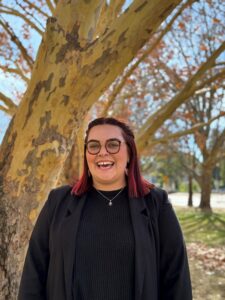
Casey Allen – Murray
Indigenous Employment Coordinator at Department of Climate Change, Energy, the Environment and Water & Milparanga Emerging Leadership Program alum
1. What does reconciliation mean to you?
As an Aboriginal woman working within the Australian Public Service (APS), I feel like I am walking in two worlds when it comes to reconciliation. While I am actively contributing to the education of my non-indigenous allies within the APS, I am also further educating myself and my community on what is next when it comes to creating a contemporary reconciled Australia.
I think, all Australians should recognise and accept our past, (the good, the bad and the ugly) and move forward together to write the wrongs of our shared history
2. What steps do you believe are crucial for reconciliation to continue on a national scale?
Reconciliation within Australia is an ongoing journey that reminds us that our shared history has two sides and that there have been generations of Indigenous and Non-Indigenous Australians forging meaningful change and paving the way to what will hopefully be a unified Australia.
I believe the next steps to contribute towards reconciliation is;
- There is widespread acceptance of our country’s history and agreement that the wrongs of the past will never be repeated— there is truth, justice, healing and historical acceptance;
- Equal Opportunities for all Australians and working towards the Closing the Gap Targets around Education, Health and Employment;
- Shaping and supporting the next generation of Indigenous Leaders coming through our education system.
The cultural load of Reconciliation needs to be evenly shared and that the burden shouldn’t be carried by Indigenous Australians, as reconciliation is a two-way street.
3. What actions have you taken, or do you plan to take, to contribute to the reconciliation process?
For myself, my reconciliation journey started as a child, I’m the second generation of a stolen family. While members of my family were successful in being reunited, there have been so many other families in my community who never were reunited.
I have been completing my Bachelor of Clinical Psychology over the past 3 years part time while working in the First Nations Affairs space. In the past year, with exposure to remote communities in my position, I have pivoted my “why” when it comes to completing my degree.
I was incredibly fortunate to have been surrounded by such supportive family and community members when I was growing up and having the ability to access counselling and psychological services to deal with the impacts of generational trauma easily. While I am building a career in First Nations Affairs, within the Federal Government, where I can use my degree and my understanding of the effects of generational trauma to continue to pave the way for supporting reconciliation.
4. Can you share an instance where you’ve witnessed or participated in a meaningful cultural exchange or collaboration?
In my current position working for Parks Australia, my team and I are currently delivering work across our jointly managed national parks to uplift employment and education for the local communities and the Traditional Owners of the lands that we partner with and work on.
The Team and I are currently in consultation with Traditional Owners and Community Members, in developing employment and educational programs, that will hope to bring the next generation of young Indigenous peoples to work toward reconciliation and the uplift of traditional skills and ancestral knowledge.
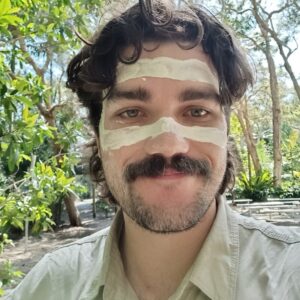
Lindsay Davies
First Nations Engagement Manager at the Australian Rural Leadership Foundation & TRAIL alum
1. What does reflection on reconciliation look like for you?
Reconciliation is a path that our Elders and Ancestors have been walking for a long time. When I think back, there are many points that are significant in Australia’s journey towards reconciliation, but my mind always goes to these people. The people that forged the way for our leaders today and the leaders of tomorrow. In embracing reconciliation and continuing this journey, we are walking in their footsteps and channelling their strength

1. What does reconciliation mean to you?
This issue is difficult since the referendum. I’m not sure that governments or politicians will offer much leadership on reconciliation. They will be fearful that much of the electorate does not see reconciliation as a priority. I think it is crucial for non-government organisations to set the reconciliation agenda not in regards to political or government policy but in relation to people. How do we bring our various identities together? A collective vision or a joint vision for the future is crucial but also possible.
2. What steps do you believe are crucial for reconciliation to continue on a national scale?
This issue is difficult since the referendum. I’m not sure that governments or politicians will offer much leadership on reconciliation. They will be fearful that much of the electorate does not see reconciliation as a priority. I think it is crucial for non-government organisations to set the reconciliation agenda not in regards to political or government policy but in relation to people. How do we bring our various identities together? A collective vision or a joint vision for the future is crucial but also possible.
3. What actions have you taken, or do you plan to take, to contribute to the reconciliation process?
RREDD is a social enterprise that is 60% Indigenous owned, employs Indigenous people and has many project relating to Indigenous people. One aspect of our work is dispute resolution in remote communities. This direct engagement is the practical work of reconciliation. Our practical reconciliation work also includes managing the engagement between institutions (government and industry) and Indigenous communities. This work is only about the negotiation but also about building the relationships between people. Those relationships build understanding and ultimately trust.
4. Reflecting on the past, what are some significant milestones or initiatives in the journey towards reconciliation that stand out to you? What lessons can we draw from these examples?
Indigenous Australians have a staged a number of significant strikes over time: the Pilbra pastoral strike in 1949; the Gurindji Wavehill walkoff in 1966; the Palm Island Strike. This direct action in the form of workers’ strikes borrowed a western tradition of withdrawing of labour to elicit change in working conditions. The Indigenous strikes always had a deeper issue relating to country.
Another really important reconciliation event was the presentation of the “bark petition” in 1963. This respectful petition sought to have the Federal Parliament recognise the Yolgnu clan rights to land. The granting of a mining lease over Yolgnu land was the trigger for creating the “document”. It now sits at the heart of our democracy in Canberra along side an original copy of the Magna Carter. These documents call to our attention the ongoing work of reconciliation, the work of democracy and ultimately the work of freedom.
For more information an resources about National Reconciliation Week visit Reconciliation Australia’s website.


